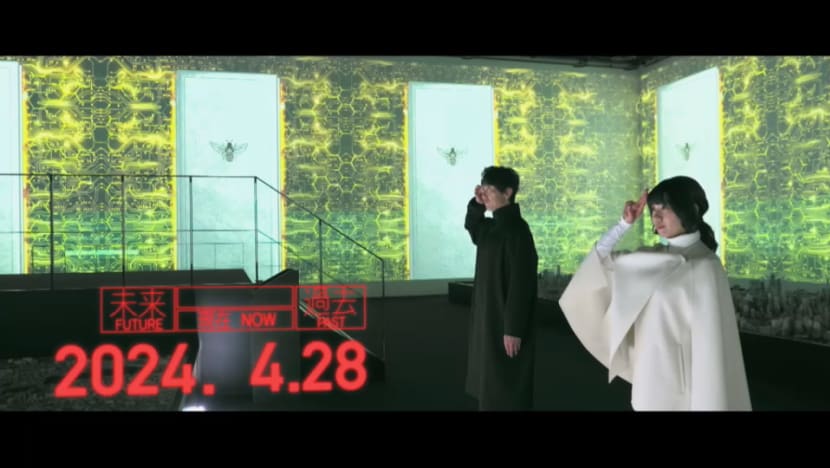Continuing its sweeping chronicle of Japan’s Economic Revitalisation Plan, or the Japan Project, this episode charts Sony and Hitachi’s stories of collapse, reinvention and global reach. In a continuation of TokyoTV’s anniversary special, Japan Hour presses forward with its bold mission: uncovering the seeds of hope that might revitalise Japan’s future. Where the previous instalment reflected on Tokyo’s urban reinvention and culinary brilliance, this chapter dives into the heartbeat of Japan’s post-war industrial miracle: Its pioneering electronics and engineering firms.
At the centre of this narrative stand two titans: Sony and Hitachi. Their rise, stumble, and reinvention over six decades mirror the story of the nation itself, driven by risk-taking, shaken by crisis but sustained by a relentless push to innovate. Sony’s story is told with cinematic nostalgia and technical reverence.

It begins with a humble rice cooker, founder Masaru Ibuka’s post-war prototype that failed to cook rice reliably in the face of fluctuating voltages. But out of that failure came an enduring philosophy. “Create what does not yet exist,” became Sony’s founding spirit.
Ibuka, the innovator alongside co-founder Akio Morita, the businessman, established a 20-men company Tokyo Telecommunications Engineering Corporation in 1946 that would come to symbolise Japanese ingenuity. From their pocket-sized transistor radio to the launch of the Walkman in 1979, the episode traces Sony’s role in personalising technology for the masses. “It was truly.
.. yes, a shock,” one nostalgic fan recalls of the first time they experienced music on the move.
The Walkman, now a cultural icon, was born from Ibuka’s simple desire to enjoy music on business trips. Though dismissed internally, “many said it would never sell,” Morita forged ahead. The device became a global phenomenon, selling 500,000 units worldwide.
It would also inspire the company’s new name, changed to reflect its global footprint, which combines the Latin word for “sound” and the English word of “Sonny”: Sony. Sony’s history is marked by daring leaps, from early transistor TVs to colour televisions and the Handycam. It even bought a major American film studio Columbia Pictures for 4.
4 billion yen. Yet, it is equally a story of missteps. The company famously lost the videotape war to VHS with its Betamax line, and by the early 2000s, it was lagging behind digital trends.
The iPod blindsided Sony, still clinging to CDs and MiniDiscs. The fallout was severe. The 2003 “Sony Shock” saw the company plunge into the red for the first time.
“The shock actually made our group more united,” then-chairman Nobuyuki Idei later reflected. At its lowest, Sony laid off 16,000 employees. But out of crisis came a pivot.
Today, Sony’s identity is no longer tethered to physical products, but immersive experiences. Its PlayStation business has become a pillar. Its PSP (PlayStation Portable) sold 70 million units while its PS5 surpassed 50 million units sold globally.
“Rather than producing tangible items,” the narrator notes, “Sony seems to be more focused on creating intangible experiences.” The episode then turns its attention turns to Hitachi, a less flashy but equally foundational name in Japan’s industrial rise. Founded in 1910 in a mining town, its first breakthrough came from crafting a domestic electric motor without relying on imported technology.
“The original ‘Made in Japan’,” as one guide at the Hitachi Origin Park describes it. The company’s reach eventually expanded to infrastructure, home appliances and transportation. The latter sector is one in which Hitachi has long been involved in, having produced Japan’s first large electric locomotive way back in 1924 with trains still being built a century later at its workshops at Yamaguchi Prefecture.
It has also since developed technology to manage train operations such as automated ticketing and train maintenance monitoring systems. A familiar sight in Osaka, the Hitachi logo atop Tsutenkaku Tower has been beaming since 1957. But this corporate giant, too, found itself vulnerable.
The 2008 global financial crisis, referred to in Japan as the “Lehman Shock,” hit hard. Hitachi posted a record loss of ¥787.3 billion (S$7 billion), the largest in its manufacturing history.
What followed was one of Japan Inc.’s most dramatic corporate restructurings. The company divested more than 20 subsidiaries and shed many of its traditional manufacturing businesses.
Under Chairman Toshiaki Higashihara, Hitachi reimagined itself as a digital solutions powerhouse. In 2022, with a more focused business, it achieved a record profit. Much of the firm’s transformation is attributed to an embrace of diversity and internationalism.
“You can join a start-up or quit. Either is fine,” says Higashihara, explaining his support for a corporate alumni network that rehires returning employees with outside experience. It is a strategy built on flexibility, openness, and above all, survival in a global market.
Today, 60 per cent of Hitachi’s 260,000-strong workforce is based overseas, and its revenue tells the same story. A key player in global transport infrastructure, Hitachi’s railway technology is now used in over 50 countries. From the Hokuriku Shinkansen in Japan to high-speed trains in the UK and metro stations in Italy, one even named “Hitachi” in Genoa, the company’s global footprint is striking.
The episode introduces Mika Nakamura, a Hitachi Rail employee posted in Paris. Balancing work with raising her son, she is part of the company’s digital transformation team. “This book is like a Bible to me,” she says, referring to a volume by Higashihara.
Her story underscores how Hitachi’s global ambitions rest not just on technology, but on its people. This international push has been supercharged by acquisitions such as GlobalLogic, a major US IT firm bought for 1 trillion yen. “We had no knowledge of railways,” says one GlobalLogic staff member, “but by partnering with Hitachi, we can use our IT expertise to shape the future of public transport.
” The closing scenes return to the overarching theme - the search for the “seed of hope” to save Japan’s future. That seed, viewers are told, does not lie in nostalgia or rote repetition of past successes. “Seeds only bloom when someone nurtures them,” the narrator insists.
Real progress, it suggests, comes from adaptability, from boldness, and from failure that leads to reinvention..
Top

Special Series: Seeds of Hope 2

Continuing the story of Japan's Economic Revitalisation Plan, this episode traces Sony and Hitachi’s paths from post-war pioneers to global innovators.











